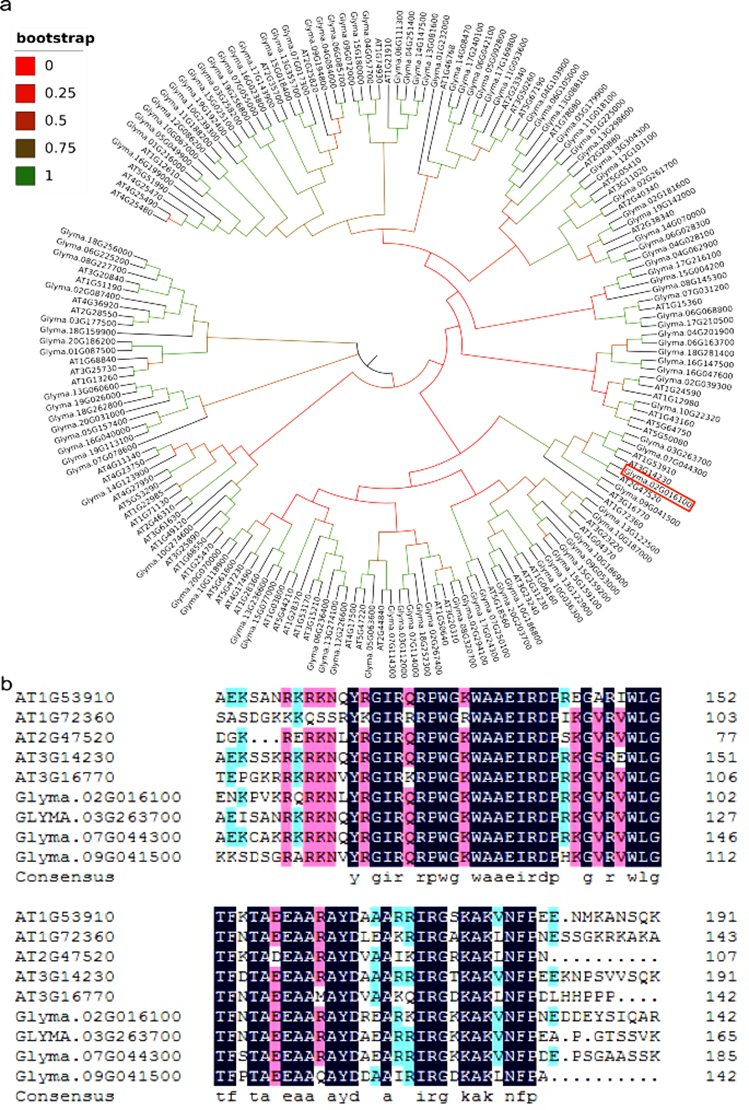GmAP2 enhances plant tolerance to aluminum toxicity and phosphorus deficiency in Arabidopsis
Cheng Li, Pengxin Du, Lidan Wang, Xin Xu, Hongying Zhong, Yanbo Cheng, Tengxiang Lian, Lu Li & Qibin Ma
Theoretical and Applied Genetics; October 4 2025; vol. 138; article 231
Abstract
Key message
Overexpression of the GmAP2 gene regulates several aspects of gene expression in Arabidopsis, including acid–aluminum stress, low-phosphorus stress, ERF family transcription factors, ABA signaling, and genes related to lateral root development. The overexpression of GmAP2 can help plants mitigate the effects of aluminum toxicity and increase their tolerance to low-phosphorus stress.
Abstract
Ethylene response factors (ERFs) represent one of the largest transcription factor families in plants and are involved in regulating biotic and abiotic stresses, as well as growth and development in higher plants. In this study, the soybean GmAP2 gene, encoding the AP2/ERF transcription factor, is a downstream gene of GsMYB7, which enhances soybean tolerance to aluminum toxicity under acidic conditions, referred to as acid-aluminum stress. The expression pattern of GmAP2, which is constitutive and rich in roots, was upregulated under acid-aluminum and low-phosphorus stress. The resistance phenotypes of the wild-type and GmAP2-overexpressing lines were investigated by treatment with acid-aluminum plates and low-phosphorus plates, respectively. The results revealed significant differences between the GmAP2 transgenic lines and the wild type, and compared with the wild-type plants, the genetically modified plants presented significantly better physiological indicators, such as fresh weight, root length, and number of lateral roots. Under acid-aluminum stress, changes in weight, MDA content, and proline content in Arabidopsis thaliana were evaluated. The genes associated with these pathways, including genes related to the acid-aluminum response (AtALMT, AtALS3, AtSTOP1, and AtMATE), ERF family (AtERF6, AtERF15, AtERF5, and AtERF109), and/or ABA response (AtABI5, AtRD29A, AtRAP2.6, AtABI1, and AtABI2), are significantly regulated. In the context of low-phosphorus stress, a comprehensive analysis of the regulatory landscape revealed significant alterations in genes involved in these pathways, including low phosphorus-responsive genes (AtPHT1; 1, AtPHO1, AtPHR1, and AtMGD2), ERF family genes (AtERF1, AtERF6, AtERF13, and AtERF109), and/or genes associated with lateral root development (AtKCS16). These regulatory changes occurred in response to low-phosphorus stress. These results provide a basis for breeding soybean varieties that can increase their tolerance to the stresses of aluminum toxicity and low phosphorus.
See: https://link.springer.com/article/10.1007/s00299-025-03622-7

Figure 1:
Bioinformatics analysis of the GmAP2 gene. a The genes were obtained by searching the NCBI and Phytozome databases, all of which belong to the AP2/ERF family. Among them, 68 genes are from Arabidopsis and 113 genes are from soybean. An evolutionary tree was constructed using the neighbor-joining method. The colors of the branches indicate the reliability of the nodes based on 1000 repetitions in the Bootstrap validation with different colors indicating different levels of protein homology. The red box highlights the target gene GmAP2. b ERF subfamily members were identified from the NCBI and Phytozome databases. Nine genes were obtained from Arabidopsis and soybean,
Views: 28


